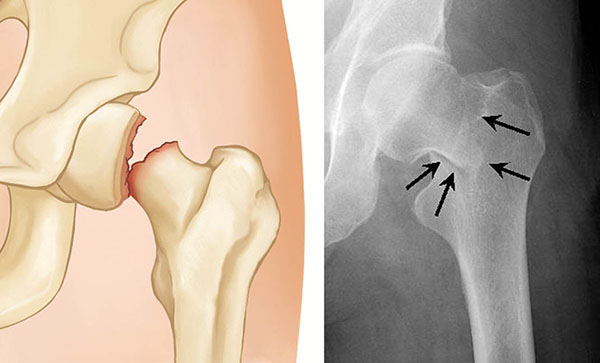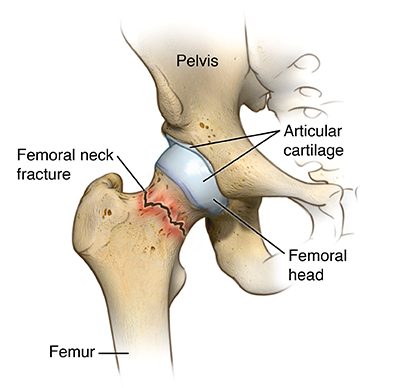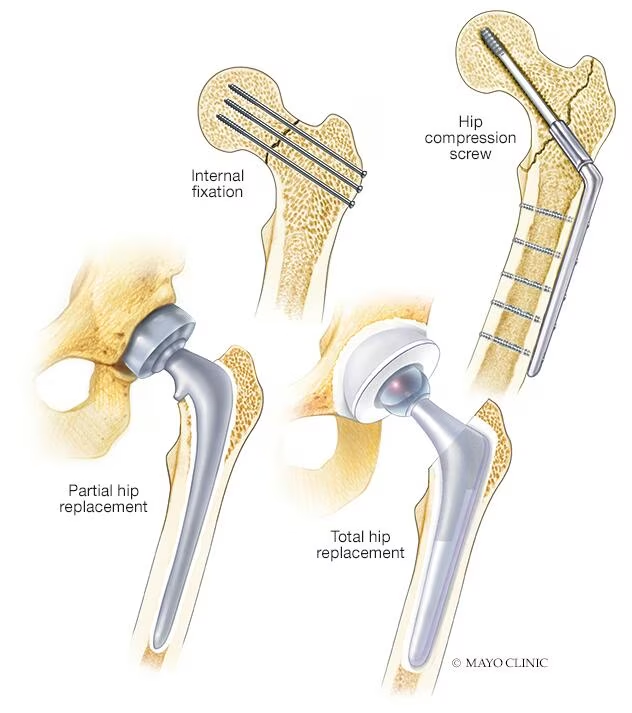Geriatric Hip Fracture Treatment
Geriatric hip fractures are fractures in the upper-third of the thigh bone (femur) and/or around the hip joint sustained by elderly adults as a result of a fall.
Hip fractures in seniors often require a higher complexity of care due to additional health concerns such as weakened bones and fragility, loss of muscle mass and balance instability. Even a low-impact fall for an active senior with one or some of these issues could result in a severe hip fracture.
Because hip fractures in seniors are very common and time-sensitive, we have established a system-wide alert that brings together a team of specialists ready to treat you or your loved one. This alert system is specific to Penn for treating hip fractures and is the only of its kind in the region.


Treatment
Treatment for hip fracture usually involves a combination of prompt surgical repair, rehabilitation, and medication to manage pain and to prevent blood clots and infection.
The type of surgery generally depends on where and how severe the fracture is, whether the broken bones aren't properly aligned (displaced), and your age and underlying health conditions.
Metal screws are inserted into the bone to hold it together while the fracture heals. Sometimes screws are attached to a metal plate that runs down the thighbone (femur).
A health care provider can often diagnose a hip fracture based on symptoms and the abnormal position of the hip and leg. An X-ray usually will confirm the fracture and show where the fracture is.
If your X-ray doesn't show a fracture but you still have hip pain, your provider might order an MRI or bone scan to look for a hairline fracture.
Rehabilitation
Physical therapy will initially focus on range-of-motion and strengthening exercises. Depending on the type of surgery and whether there's help at home, going to an extended care facility might be necessary.
In extended care and at home, an occupational therapist teaches techniques for independence in daily life, such as using the toilet, bathing, dressing and cooking. An occupational therapist will determine if a walker or wheelchair might be needed to regain mobility and independence.
Rehabilitation is defined as “a set of interventions designed to optimize functioning and reduce disability in individuals with health conditions in interaction with their environment”. Put simply, rehabilitation helps a child, adult or older person to be as independent as possible in everyday activities and enables participation in education, work, recreation and meaningful life roles such as taking care of family. It does so by working with the person and their family to address underlying health conditions and their symptoms, modifying their environment to better suit their needs, using assistive products, educating to strengthen self-management, and adapting tasks so that they can be performed more safely and independently.

